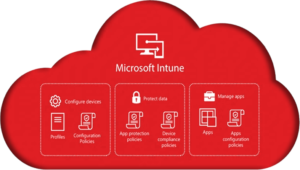By now you may have heard that support for deploying and booting to VHDs is integrated into Microsoft Deployment Toolkit 2012. If not, Maik Koster has a great article over at myITforum.com you should check out! One thing we have been working on lately is whether there is a way to use ConfigMgr’s OSD feature to deploy to VHD. With the tight integration between MDT and SCCM, you might expect this to be fairly straightforward.
Stay tuned, because before going on we should clear something up – why would you want to boot physical hardware to a VHD in the first place? One reason that Maik Koster points out in the article above is the ability to use differencing disks. A differencing disk is great for testing updates or running a demo – it’s just another VHD that treats the original VHD as a parent, keeping changes separate from the original. This way, you can boot to the differencing disk to try something out, and if it goes poorly you can just fall back to the original disk. Maik covers some other benefits in his article as well – you really should read it!
As it turns out, there is no way for SCCM to deploy to VHD natively at this time. Now, that’s not to say you couldn’t implement a solution that uses task sequence commands to deploy a pre-existing VHD, but the new VHD deployment templates in MDT2012 do not transfer over. Deploying a pre-existing VHD also resigns you to using a “thick” image, preventing exploitation of the real killer features in OSD.
Are there other options? In the course of our research we’ve identified some possibilities. One would simply use MDT 2012 to deploy a basic reference image including the ConfigMgr client to selected hardware using the deploy to VHD capability. From here, SCCM could be set up to quickly run a task sequence that layers on applications and customizations – in effect, this would split the normal deployment task sequence into two parts, the first run by MDT, and the second by SCCM. While this could potentially run smoothly, the fragmentation inherent in the design as well as considerations surrounding whether MDT and SCCM will both need PXE capability could eliminate this as a viable solution.
Alternatively, a more complex option would be to modify a deployment task sequence within SCCM to create and mount a VHD while in the Windows PE environment, and then deploy the reference image and execute task sequence steps as you normally would with a physical disk. It does appear something similar to this may have been done successfully with SCCM 2007. In addition, this tutorial could provide a valuable resource. This strategy is definitely not supported by Microsoft – in fact, after obtaining expert opinion we have ruled this out as an option in our case.
We’re still working on this one, so look for further info to come!





